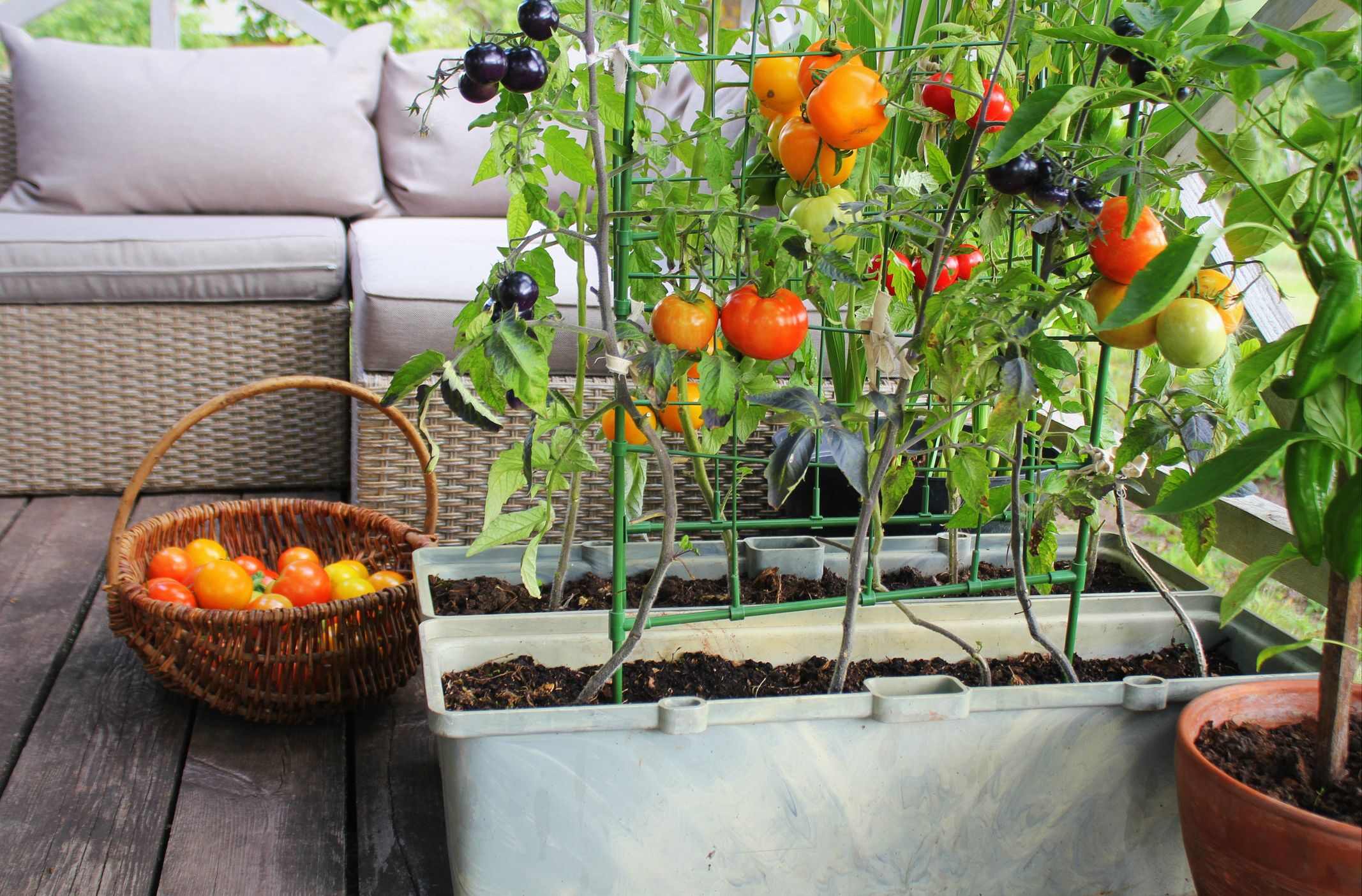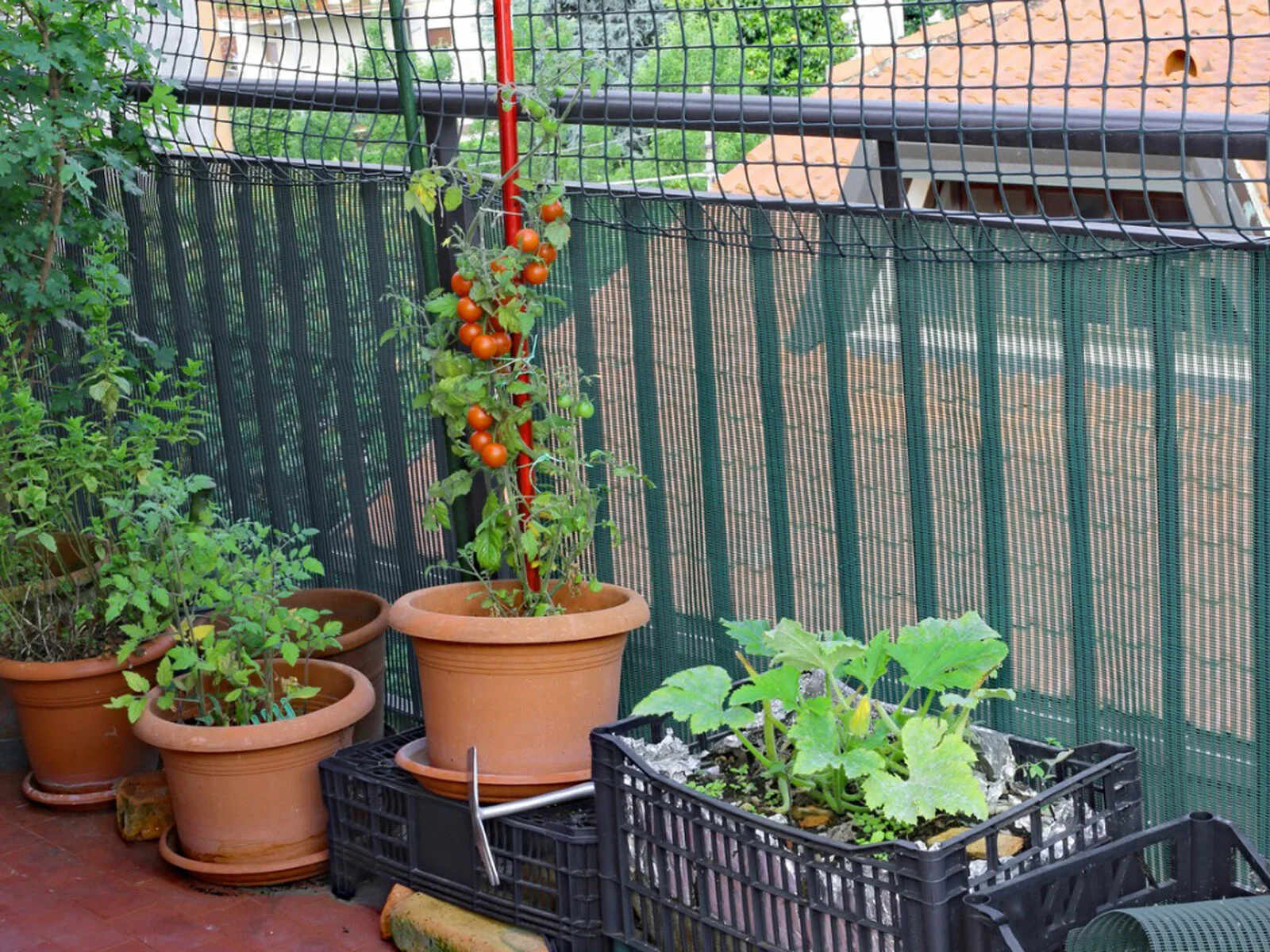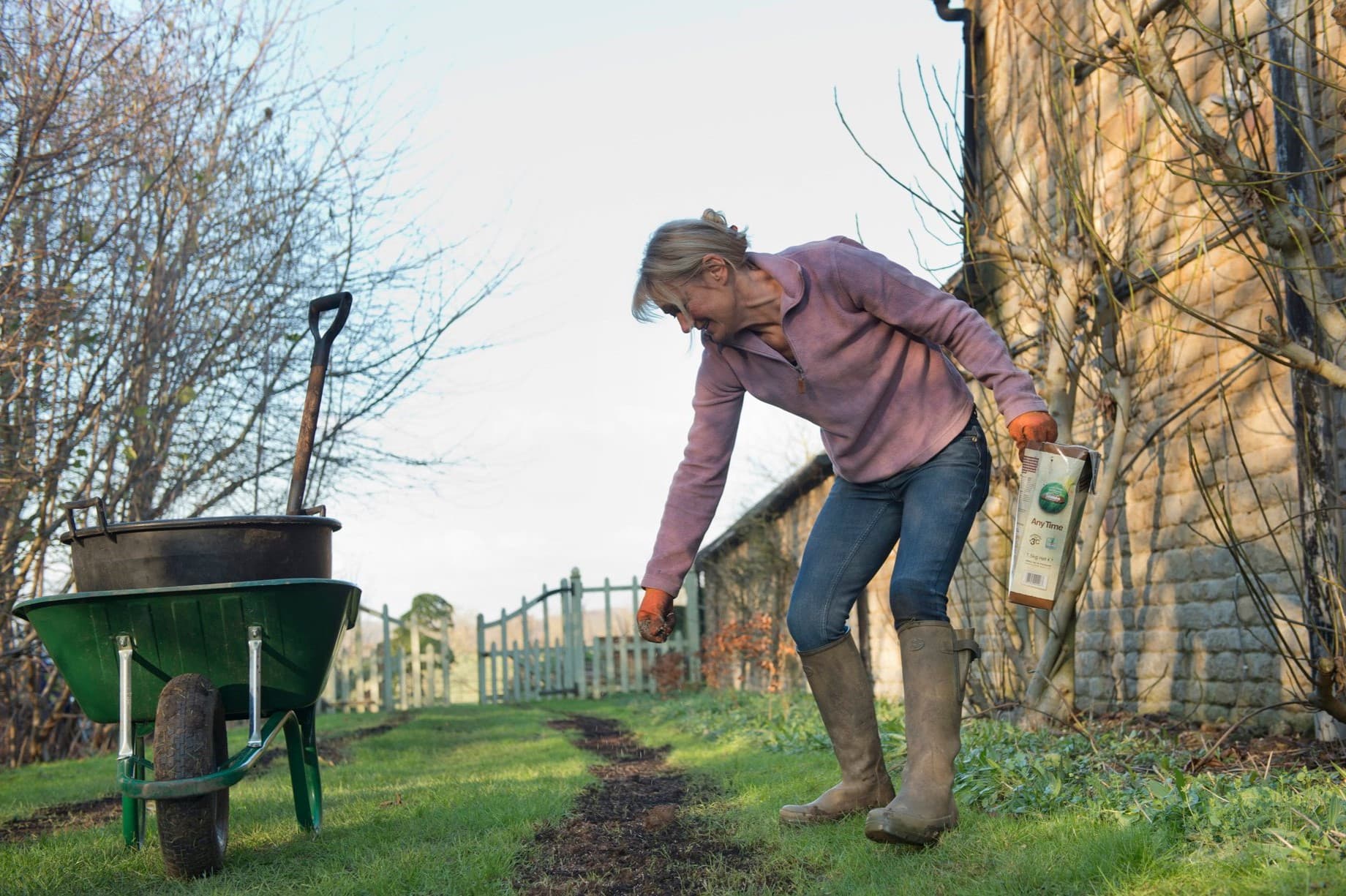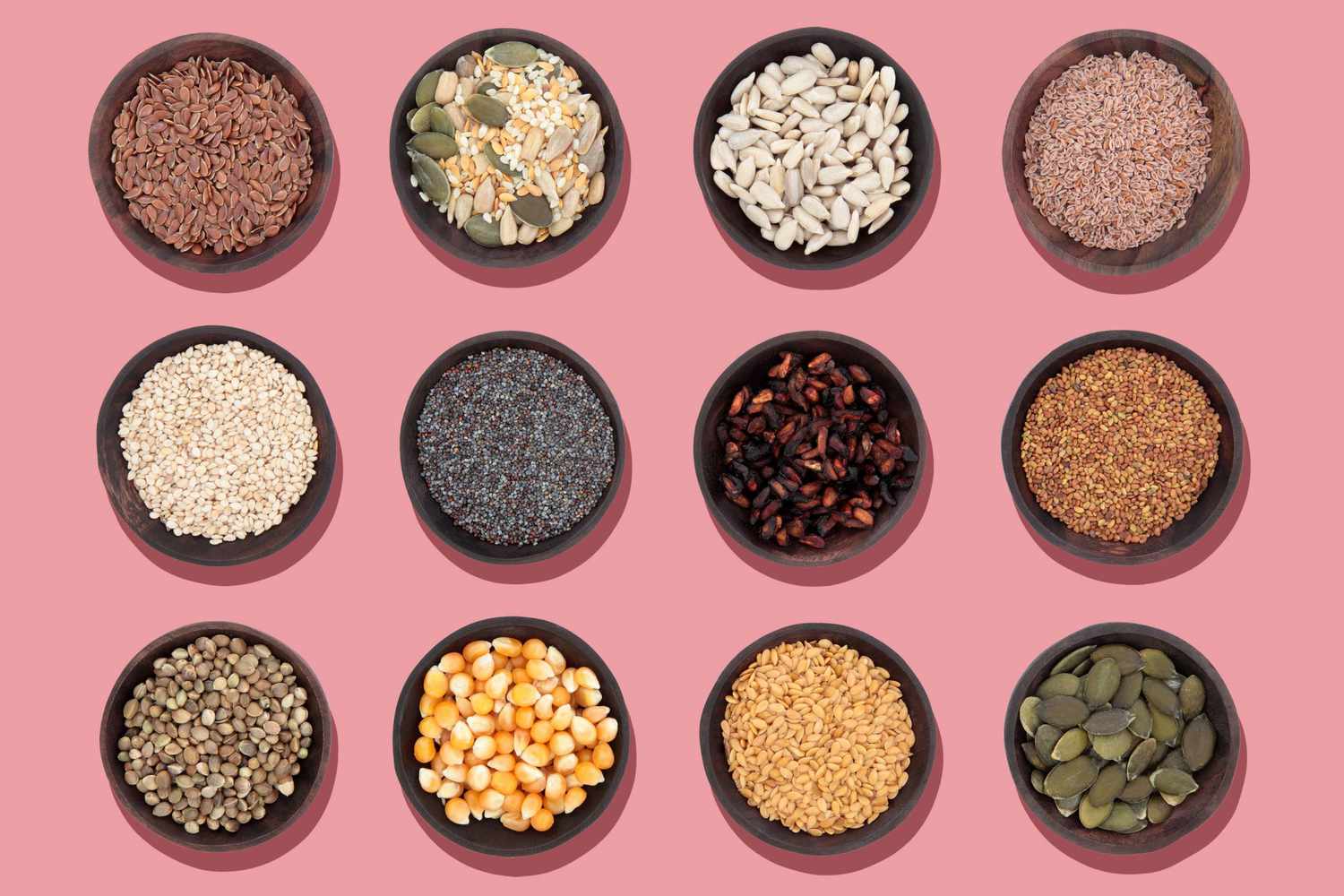

Articles
What Can You Grow On A Balcony
Modified: August 28, 2024
Discover the endless possibilities of growing your own garden on your balcony with our informative articles. From herbs to vegetables, learn how to maximize your space and create a thriving urban oasis.
(Many of the links in this article redirect to a specific reviewed product. Your purchase of these products through affiliate links helps to generate commission for Storables.com, at no extra cost. Learn more)
Introduction
Having a balcony, whether big or small, can provide you with a wonderful opportunity to cultivate your own green oasis in the heart of the city. Balcony gardening is gaining popularity among urban dwellers who long for a connection with nature and a space to unleash their creativity. It involves transforming your balcony into a vibrant and flourishing garden, where you can grow a variety of plants, herbs, flowers, and even vegetables.
In addition to adding beauty and life to your outdoor space, balcony gardening offers numerous benefits that go beyond mere aesthetics. It allows you to create a peaceful sanctuary where you can escape from the hustle and bustle of daily life and unwind amidst the fragrance of blooming flowers and the gentle rustling of leaves.
Furthermore, balcony gardening enables you to reap the rewards of cultivating your own fresh produce right at home. Whether you have a penchant for aromatic herbs, juicy tomatoes, or colorful peppers, a carefully tended balcony garden can yield a bountiful harvest that can elevate your culinary creations.
With the right tools, knowledge, and a sprinkle of creativity, anyone can turn their balcony into a thriving oasis. In this article, we will explore the many benefits of balcony gardening, factors to consider before starting, tips for choosing the right plants, tools and supplies needed, maintenance tips, and common challenges to be aware of. So let’s roll up our sleeves and discover the incredible world of balcony gardening!
Key Takeaways:
- Balcony gardening offers urban dwellers a chance to create a peaceful oasis, grow fresh produce, and connect with nature, providing numerous benefits such as improved air quality, mental well-being, and increased biodiversity.
- Successful balcony gardening requires careful consideration of factors like sunlight, space, and climate, as well as the right plant selection, maintenance, and overcoming common challenges. Embrace the process, stay observant, and enjoy the beauty and tranquility it brings to your everyday life.
Read more: What Can You Grow In Gutters
Benefits of Balcony Gardening
Balcony gardening offers a wide range of benefits, making it an attractive option for urban dwellers looking to incorporate greenery into their living spaces. Here are some of the key benefits you can enjoy by venturing into the world of balcony gardening:
- Improved air quality: By growing plants on your balcony, you contribute to reducing air pollution in your immediate surroundings. Plants naturally absorb carbon dioxide and release oxygen, improving the air quality and making your balcony a fresher and healthier space.
- Enhanced mental well-being: Spending time in nature has been shown to have positive effects on mental health. Creating a balcony garden provides you with a place to relax, unwind, and reconnect with nature, allowing you to destress and find peace amid the urban chaos.
- Access to fresh produce: One of the most rewarding aspects of balcony gardening is the ability to grow your own fresh herbs, vegetables, and fruits. Nothing compares to the taste and satisfaction of incorporating homegrown ingredients into your meals, ensuring that you’re consuming healthy, pesticide-free produce.
- Increased biodiversity: Your balcony garden can attract various beneficial insects and birds, contributing to the biodiversity of your local environment. By providing a habitat for these creatures, you play a part in maintaining a balanced ecosystem.
- Reduced stress and improved well-being: Gardening has been known to have therapeutic effects, reducing stress levels and promoting a sense of well-being. The act of nurturing plants, being in touch with nature, and witnessing the growth and bloom of your balcony garden can be immensely fulfilling and calming.
- Maximized living space: Balcony gardening allows you to utilize the often underutilized space on your balcony, transforming it into an extension of your living area. It provides you with an additional outdoor space to relax, entertain, and enjoy the beauty of nature without leaving your home.
- Environmental sustainability: Engaging in balcony gardening promotes sustainable practices, such as reducing food miles, minimizing waste, and conserving water. By growing your own produce, you contribute to a more sustainable and environmentally friendly lifestyle.
As you can see, balcony gardening offers a plethora of benefits that go beyond the aesthetic appeal. Whether you’re a seasoned gardener or a novice, creating a balcony garden can be a fulfilling and rewarding experience, bringing nature closer to your daily life and elevating your overall well-being.
Factors to Consider for Balcony Gardening
Before diving into balcony gardening, there are several important factors to consider to ensure the success and sustainability of your garden. Here are some key factors and considerations to keep in mind:
- Amount of sunlight: Assess the amount of sunlight your balcony receives throughout the day. This will help you determine what plants you can grow. Full-sun plants require at least 6-8 hours of direct sunlight, while shade-tolerant plants thrive in areas with limited sunlight.
- Space availability: Take into account the available space on your balcony. Consider the size and weight-bearing capacity of your balcony, as well as any restrictions or regulations set by your building or homeowners’ association.
- Climate and weather conditions: Understand the specific climate and weather conditions of your area. Certain plants thrive in particular climates, so choose plants that are suitable for your region’s temperature, rainfall, and humidity levels.
- Wind exposure: Assess the intensity and direction of wind on your balcony. Wind can affect the growth and health of your plants, so consider using windbreaks or selecting plants that can withstand strong gusts.
- Water source: Determine the availability and accessibility of a water source on your balcony. Ensure that you have a convenient way to water your plants regularly and effectively.
- Budget and maintenance: Consider the financial aspect of balcony gardening, including the cost of plants, containers, soil, fertilizers, and tools. Also, think about the time and effort required for maintenance and upkeep of your balcony garden.
- Pests and diseases: Be aware of common pests and diseases that can affect balcony gardens. Implement preventive measures such as proper sanitation, regular inspection, and the use of organic pest control methods to keep your plants healthy.
- Neighboring balconies: Consider the proximity of your balcony to neighboring balconies. Be mindful of potential issues such as privacy concerns, intrusive plant growth, or disagreements over shared spaces.
- Personal preferences: Lastly, consider your personal preferences and the purpose of your balcony garden. Do you want it to be a serene oasis for relaxation, a vibrant space for entertaining guests, or a functional area for growing your own produce? Tailor your choices accordingly.
By carefully considering these factors, you can make informed decisions about plant selection, layout, and maintenance techniques for your balcony garden. This will help ensure that your garden thrives and brings you joy for years to come.
Choosing the Right Plants for a Balcony Garden
Choosing the right plants is essential for the success of your balcony garden. Considering your specific balcony conditions and personal preferences will help you select plants that thrive in your environment and suit your desired aesthetic. Here are some factors to consider when choosing plants for your balcony garden:
- Light requirements: Determine the amount of sunlight your balcony receives and choose plants that match those light requirements. Full-sun plants, such as tomatoes and peppers, need direct sunlight for at least 6-8 hours a day, while shade-tolerant plants like ferns and begonias thrive in limited sunlight.
- Space availability: Consider the size of your balcony and the available space for plants. If you have limited space, opt for vertical gardening with climbers or hanging baskets. Alternatively, if you have ample space, you can create a diverse garden with different types of plants.
- Climate and weather adaptability: Choose plants that are suitable for your climate and can withstand the weather conditions in your area. Some plants are more tolerant of heat or cold, while others prefer a specific temperature range.
- Container compatibility: Take into account the size and weight-bearing capacity of your containers. Ensure that the plants you choose can thrive in the containers you have or are planning to use. Consider the root system, water drainage, and potential growth of the plants.
- Seasonality: Decide whether you want to have a year-round balcony garden or if you prefer to switch out plants seasonally. Some plants, like annual flowers, will need to be replaced each year, while perennial plants, herbs, and small fruit trees can provide year-round beauty and harvest.
- Personal preferences: Consider your personal preferences when it comes to plant types, colors, and fragrances. Do you prefer flowering plants, foliage plants, or a mix of both? Are you drawn to vibrant shades or more subdued tones? Choose plants that align with your aesthetic taste and bring you joy.
- Edible or ornamental: Decide if you want to focus on growing edible plants like herbs, vegetables, and fruits, or if you want a balcony garden primarily for ornamental purposes. You can also strike a balance between the two by incorporating both edible and ornamental plants.
- Companion planting: Consider combining plants that have symbiotic relationships. Some plants naturally repel pests or enhance each other’s growth when planted together. Research companion planting techniques to create a harmonious and beneficial garden ecosystem.
- Maintenance requirements: Be realistic about the time and effort you can dedicate to plant care. Choose plants that align with your availability and gardening skills. If you have a busy schedule, opt for low-maintenance plants that require minimal care.
By taking these factors into consideration, you can select the right plants for your balcony garden, creating an environment where they can flourish and bring beauty to your outdoor space. Remember to research each plant’s specific care requirements for optimal growth and enjoyment.
Container Gardening on a Balcony
Container gardening is a popular method of gardening on balconies that allows you to grow a wide variety of plants in limited space. By utilizing containers, you can create a beautiful and functional balcony garden. Here are some key tips for successful container gardening on a balcony:
- Choose the right containers: Select containers that are appropriate for the size and growth requirements of your plants. Consider the material, drainage holes, and weight of the containers. Opt for lightweight containers made of plastic or fiberglass if weight is a concern.
- Provide proper drainage: Ensure that your containers have adequate drainage holes to prevent waterlogging. Place a layer of stones or broken pottery at the bottom of the containers to facilitate drainage and avoid root rot.
- Use quality potting soil: Invest in good quality potting soil that is well-draining and nutrient-rich. Avoid using soil from your garden, as it may not provide the necessary conditions for container gardening.
- Consider vertical gardening: If space is limited, utilize vertical gardening techniques. Install trellises, hanging baskets, or wall-mounted planters to maximize your vertical space and grow climbing plants or trailing vines.
- Plant according to size: Arrange your plants according to their size and growth habits. Place taller plants at the back or in the center, and smaller or trailing plants towards the front or edges of the balcony. This creates a visually appealing and well-organized arrangement.
- Follow proper watering techniques: Ensure that your plants receive adequate water, but be careful not to overwater them. Check the moisture level of the soil regularly and water when the top inch feels dry. Avoid letting the containers sit in standing water, as it can lead to root rot.
- Fertilize regularly: Provide nutrients to your container plants by fertilizing them regularly. Use a balanced, slow-release fertilizer or organic alternatives. Follow the package instructions for proper dosage and timing.
- Prune and trim as needed: Keep your balcony garden tidy and promote healthy growth by pruning and trimming your plants. Remove dead or diseased leaves, and trim back excessive growth to maintain the shape and beauty of your plants.
- Rotate plants: To prevent plants from getting leggy or overcrowded, consider rotating the position of your containers throughout the growing season. This ensures that all plants receive equal exposure to sunlight and air circulation.
- Monitor pests and diseases: Regularly inspect your plants for pests and signs of diseases. Remove any affected leaves or treat with organic pest control methods. Keeping a close eye on your plants helps prevent infestations and maintains their overall health.
Container gardening on a balcony provides you with the flexibility to create a dynamic and versatile garden that can adapt to your available space and plant preferences. By following these container gardening tips, you can have a thriving and visually appealing garden right at your fingertips.
Consider the amount of sunlight your balcony receives and choose plants accordingly. Herbs, small vegetables, and flowers like petunias and geraniums are great options for balcony gardening. Use lightweight containers and consider vertical gardening to maximize space.Read more: How To Grow Tomatoes On Balcony
Necessary Tools and Supplies for Balcony Gardening
Having the right tools and supplies is essential for successful balcony gardening. These items will help you efficiently care for your plants and ensure that your balcony garden thrives. Here are some necessary tools and supplies you should have:
- Hand tools: Invest in a set of high-quality hand tools, including a trowel, pruners, a hand rake, and a small spade. These tools will assist you in planting, transplanting, pruning, and maintaining your balcony garden.
- Watering can or hose: Choose a watering can with a narrow spout for precise watering or opt for a lightweight and flexible garden hose with a spray nozzle attachment. Ensure you have a convenient way to water your plants and provide them with the necessary moisture.
- Plant containers and saucers: Select containers that suit your balcony’s style and the plants you want to grow. Consider their size, drainage capabilities, and weight. Ensure you have saucers or trays to catch excess water and protect your balcony floor.
- Potting soil: Use high-quality potting soil that provides proper drainage and nutrient balance for your plants. Avoid using garden soil, as it may be too heavy and lack essential nutrients for container gardening.
- Fertilizers: Choose a balanced, slow-release fertilizer specifically formulated for container plants. Alternatively, opt for organic fertilizers like compost or worm castings to provide natural nourishment to your plants.
- Plant stakes or trellises: If you’re growing climbing plants or veggies that need support, have stakes or trellises available to provide them with the necessary structure and guidance as they grow. This will prevent them from sprawling or collapsing under their own weight.
- Pruning shears: Pruning shears are essential for maintaining the health and shape of your plants. Use them to remove dead or damaged foliage, trim excessive growth, and shape your plants as desired.
- Organic pest control: Keep a supply of organic pest control products like insecticidal soap or neem oil on hand to deal with common pests. These products are safe for the environment and won’t harm beneficial insects.
- Gardening gloves: Protect your hands from dirt, thorns, and chemicals by wearing gardening gloves. Choose gloves that fit well and provide good dexterity, allowing you to work comfortably while keeping your hands safe.
- Garden labels or markers: Use garden labels or markers to identify your plants, especially if you’re growing multiple varieties. This helps you keep track of their names, watering needs, or any specific care instructions.
- Protective gear: Depending on your gardening tasks, consider having protective gear like knee pads, a wide-brimmed hat, sunscreen, and sunglasses to shield yourself from the sun, minimize strain, and keep yourself comfortable while working on your balcony garden.
By having these essential tools and supplies readily available, you can ensure that you’re equipped to care for your plants and tackle any gardening tasks that come your way. Investing in quality tools and supplies will not only make your gardening experience more enjoyable but also contribute to the long-term success of your balcony garden.
Maintaining a Balcony Garden
Maintaining a balcony garden is crucial for the continued health and beauty of your plants. Regular care and attention will ensure that your garden thrives and flourishes. Here are some essential maintenance tasks to keep your balcony garden in top shape:
- Watering: Water your plants regularly, ensuring they receive the appropriate amount of moisture. Check the moisture level of the soil and adjust your watering schedule accordingly. Be careful not to overwater or underwater your plants, as both can lead to problems.
- Fertilizing: Provide your plants with the necessary nutrients by fertilizing them regularly. Follow the instructions on the fertilizer packaging or use organic alternatives like compost or liquid seaweed. Fertilize plants according to their specific needs and growth stages.
- Pruning and trimming: Regularly prune and trim your plants to promote healthy growth and maintain their desired shape. Remove dead or yellowing leaves, trim back excessive growth, and shape your plants as needed.
- Deadheading: Remove spent flowers by deadheading them. This practice encourages further bloom and prevents energy from being wasted on seed production. It also keeps your plants looking neat and tidy.
- Weeding: Keep an eye out for weeds and remove them promptly to prevent competition for nutrients and space. Regularly inspect your balcony garden and tackle any weeds that appear, ensuring they don’t multiply and overtake your plants.
- Pest control: Monitor your plants for signs of pests and take action as soon as you detect any issues. Use organic pest control methods such as neem oil or insecticidal soap to treat common pests. Regularly inspect your plants to catch and address pest problems early.
- Supporting plants: If you have plants that require support, regularly check and adjust their stakes, trellises, or ties to ensure they have the necessary support as they grow. This will prevent them from sagging or collapsing under their own weight.
- Cleaning and tidying: Keep your balcony garden clean and tidy by regularly removing debris, fallen leaves, and dead plant matter. This not only improves the aesthetics but also helps prevent diseases and pests from taking hold.
- Inspecting for diseases: Regularly inspect your plants for signs of diseases such as mold, fungal infections, or discoloration. Address any issues promptly by removing affected parts or treating with appropriate organic treatments to prevent further spread.
- Monitoring growth: Keep track of your plants’ growth and make necessary adjustments. Some plants may outgrow their containers or need repotting, while others may require pruning or thinning for proper airflow and growth.
By incorporating these maintenance tasks into your routine, you will ensure that your balcony garden remains healthy and flourishing. Regular care and attention to your plants will reward you with a vibrant and beautiful garden that brings joy and tranquility to your outdoor space.
Common Challenges in Balcony Gardening
While balcony gardening can be a rewarding and enjoyable experience, it is not without its challenges. Being aware of common obstacles can help you address them effectively and ensure the success of your balcony garden. Here are some common challenges you may encounter when engaging in balcony gardening:
- Limited space: Balconies often have limited space, which can pose a challenge when it comes to plant selection and arranging them. It’s important to choose plants that fit within your available space and utilize vertical gardening techniques, such as hanging baskets or trellises, to maximize the space.
- Insufficient sunlight: Depending on the orientation and surrounding buildings, your balcony may receive limited sunlight. Lack of sufficient sunlight can hinder the growth of sun-loving plants. Consider shade-tolerant varieties and explore alternative ways to provide additional lighting if needed, such as artificial grow lights.
- Wind exposure: Balconies are often exposed to strong winds, which can damage or dry out plants. Select wind-resistant plants or use windbreakers, such as trellises or protective screens, to shield your plants from strong gusts.
- Watering challenges: Balcony gardens can be prone to water-related challenges, such as insufficient drainage or water runoff. Ensure your containers have proper drainage to avoid waterlogged soil, and use saucers or trays to catch excess water. Be mindful of watering frequency and adjust it based on your plants’ individual needs.
- Pest infestations: Pests can cause damage to your plants, especially in the confined space of a balcony garden. Keep a close eye on your plants for signs of pests and address any infestations early. Regularly inspect and clean your balcony to discourage pests from taking up residence.
- Temperature extremes: Balconies can experience temperature extremes, with hot summers and cold winters. Protect your plants from extreme heat by providing shade or using reflective materials. During the winter, cover tender plants and bring frost-sensitive ones indoors to protect them from freezing temperatures.
- Neighborhood restrictions: Some apartments or homeowner associations may have restrictions or regulations regarding balcony gardening. Familiarize yourself with any rules or limitations and ensure that your gardening activities comply with them.
- Maintenance challenges: Balcony gardening requires regular maintenance, including watering, pruning, and fertilizing. Limited space and access might make these tasks more challenging. Plan your maintenance routine carefully and consider investing in the right tools and equipment to simplify the process.
- Seasonal changes: Depending on your climate, seasonal changes can impact your balcony garden. Shifts in temperature, sunlight hours, and weather conditions may require you to adapt your plant selection and care practices to ensure their well-being throughout the year.
- Plant overcrowding: It can be tempting to pack your balcony garden with numerous plants, but overcrowding can lead to stunted growth, competition for resources, and increased risk of pests and diseases. Give your plants enough space to grow and thrive, even if it means being selective about the varieties you choose.
By anticipating and addressing these common challenges proactively, you can overcome them and create a thriving balcony garden. Adaptability, proper planning, and regular monitoring are key to maintaining a successful balcony garden that brings beauty and joy to your outdoor living space.
Tips for Successful Balcony Gardening
Balcony gardening can be a rewarding and fulfilling experience when done right. To ensure the success of your balcony garden, consider these helpful tips to create a thriving oasis in your urban space:
- Know your balcony: Assess the conditions of your balcony, such as sunlight exposure, wind patterns, and available space. This knowledge will help you choose the right plants and design a layout that maximizes the potential of your balcony garden.
- Choose the right plants: Select plants that are suitable for your balcony’s conditions, such as light requirements and space limitations. Opt for varieties that are well-suited to container gardening and consider a mix of flowering plants, foliage plants, herbs, and vegetables to create a balanced and visually appealing garden.
- Ensure proper drainage: Use containers with adequate drainage holes to allow excess water to escape. This helps prevent waterlogging and ensures that your plants’ roots stay healthy. Use a layer of stones or broken pottery at the bottom of the containers to facilitate drainage.
- Water consistently: Establish a regular watering routine for your plants, taking into account their individual moisture needs. Use your finger to check the moisture level of the soil and water when the top inch feels dry. Remember that container plants may require more frequent watering than plants in the ground.
- Fertilize appropriately: Feed your plants with a balanced fertilizer to provide them with essential nutrients. Follow the instructions on the fertilizer packaging and avoid over-fertilization, as it can lead to burned roots or excessive leaf growth. Consider using organic fertilizers for a more sustainable option.
- Encourage pollinators: Attract bees, butterflies, and other pollinators to your balcony garden by including flowers that provide nectar and food sources. These pollinators play a vital role in plant reproduction and will help ensure a fruitful garden.
- Practice succession planting: Maximize your space by practicing succession planting. Once a plant has finished its harvest or blooming period, replace it with a new plant to keep your garden productive and visually appealing throughout the season.
- Utilize vertical space: Make the most of your limited space by utilizing vertical gardening techniques. Install trellises, hanging baskets, or wall-mounted planters to grow climbing plants or trailing vines, creating a lush and dynamic display.
- Regularly monitor for pests and diseases: Inspect your plants regularly for signs of pests or diseases. Catching issues early allows for prompt treatment and prevents the spread to other plants. Embrace organic pest control methods to maintain a healthy and pesticide-free garden.
- Stay organized: Keep track of each plant’s care requirements, including watering schedules, fertilizing needs, and any specific instructions. Use labels or markers to identify your plants and create a gardening journal to track your observations and successes.
- Enjoy the process: Balcony gardening is a journey that allows you to connect with nature and nurture living things. Embrace the process, take pleasure in the small victories, and enjoy the beauty and tranquility your balcony garden brings to your everyday life.
By implementing these tips, you will be on your way to creating a successful and thriving balcony garden. Remember to adapt the information to your specific balcony conditions, stay observant, and be willing to experiment and learn as you go. Happy gardening!
Conclusion
Balcony gardening is a wonderful way to bring the beauty and benefits of nature into your urban living space. By transforming your balcony into a vibrant oasis, you can create a peaceful sanctuary, grow your own fresh produce, and reconnect with the natural world right outside your door.
Throughout this article, we have explored the many benefits of balcony gardening, including improved air quality, enhanced mental well-being, access to fresh produce, increased biodiversity, reduced stress, and maximized living space. We’ve also delved into the factors to consider when embarking on balcony gardening, such as sunlight exposure, space availability, climate conditions, and personal preferences.
We’ve discussed the importance of choosing the right plants for your balcony garden, taking into account light requirements, container compatibility, climate adaptability, and personal preferences. We’ve also highlighted the significance of container gardening techniques, proper tools and supplies, and maintenance tasks like watering, fertilizing, pruning, and pest management.
Despite the common challenges that come with balcony gardening, including limited space, insufficient sunlight, wind exposure, and maintenance difficulties, armed with knowledge and resourcefulness, you can overcome these obstacles and create a thriving balcony garden.
Remember to continuously monitor and adjust your gardening practices to meet the changing needs of your plants and your specific balcony environment. Stay organized, enjoy the process, and embrace the beauty and tranquility that your balcony garden brings to your life.
So, whether you have a small balcony or a spacious terrace, seize the opportunity to transform it into a green haven. Immerse yourself in the joy of watching your plants grow and flourish, indulge in the satisfaction of harvesting your own fresh produce, and relish the peace and tranquility that nature brings to your urban abode.
Get your hands dirty, soak up the sun, and let your balcony garden become a source of inspiration and rejuvenation in your daily life. Happy gardening!
Frequently Asked Questions about What Can You Grow On A Balcony
Was this page helpful?
At Storables.com, we guarantee accurate and reliable information. Our content, validated by Expert Board Contributors, is crafted following stringent Editorial Policies. We're committed to providing you with well-researched, expert-backed insights for all your informational needs.














0 thoughts on “What Can You Grow On A Balcony”